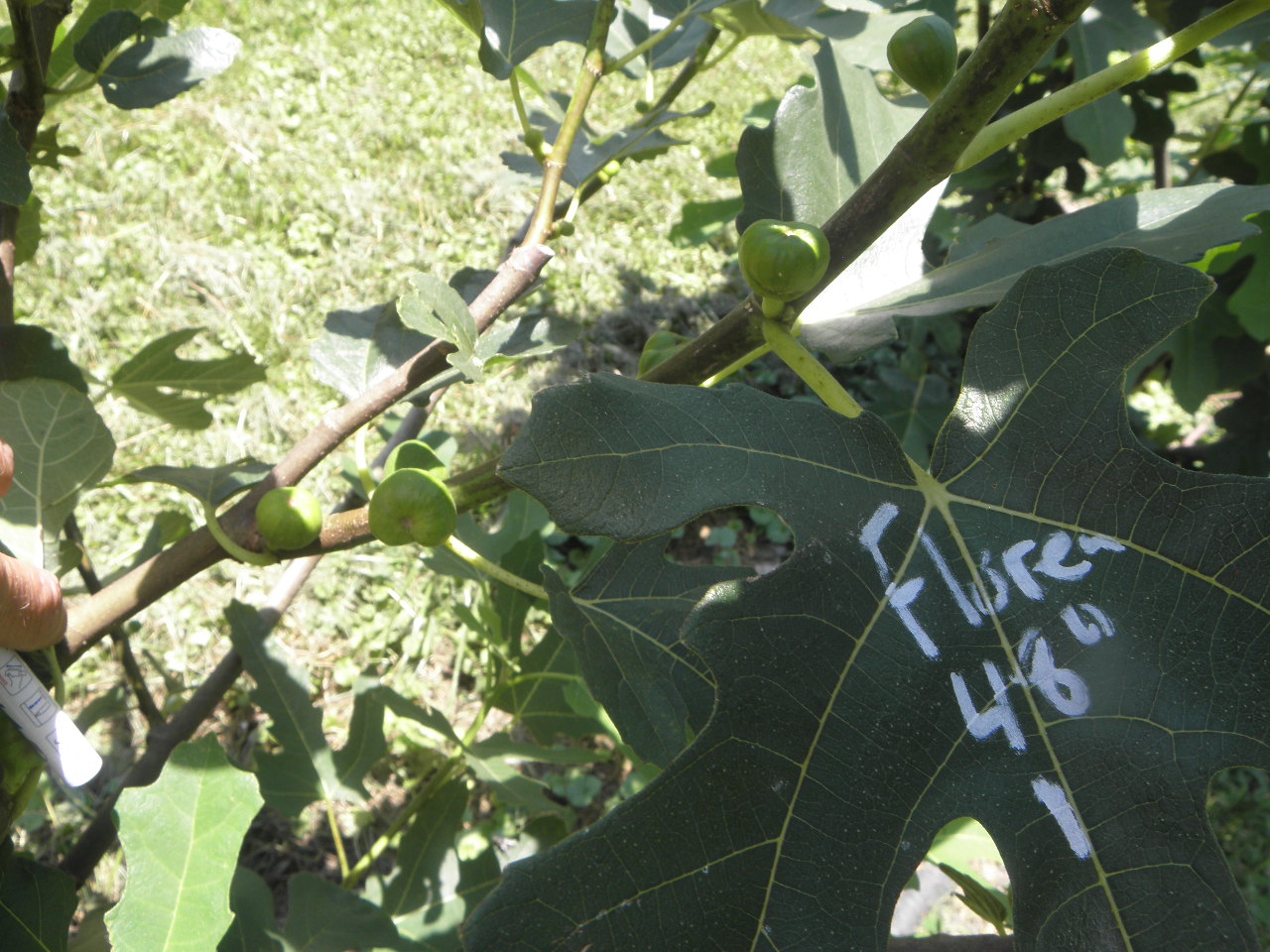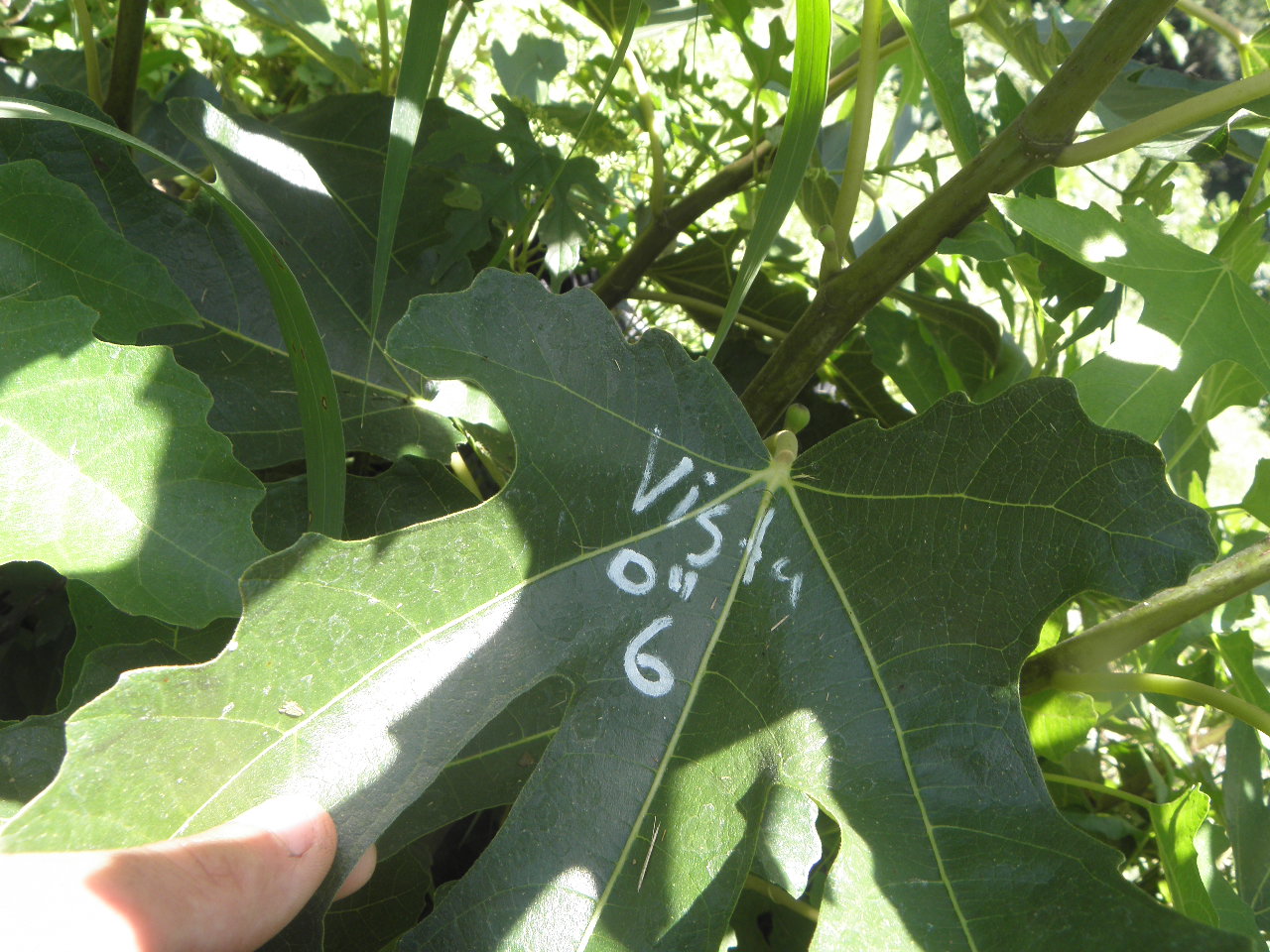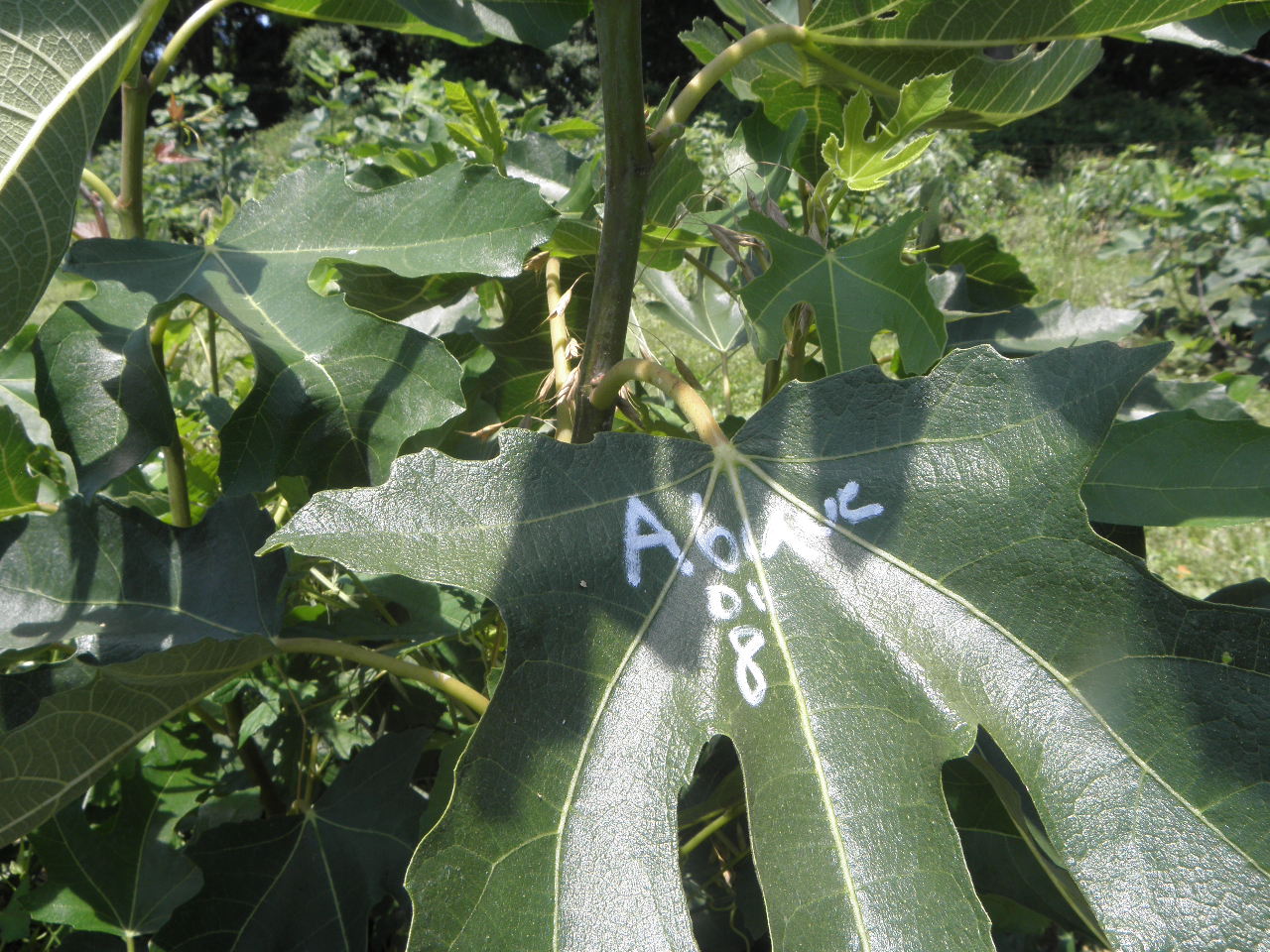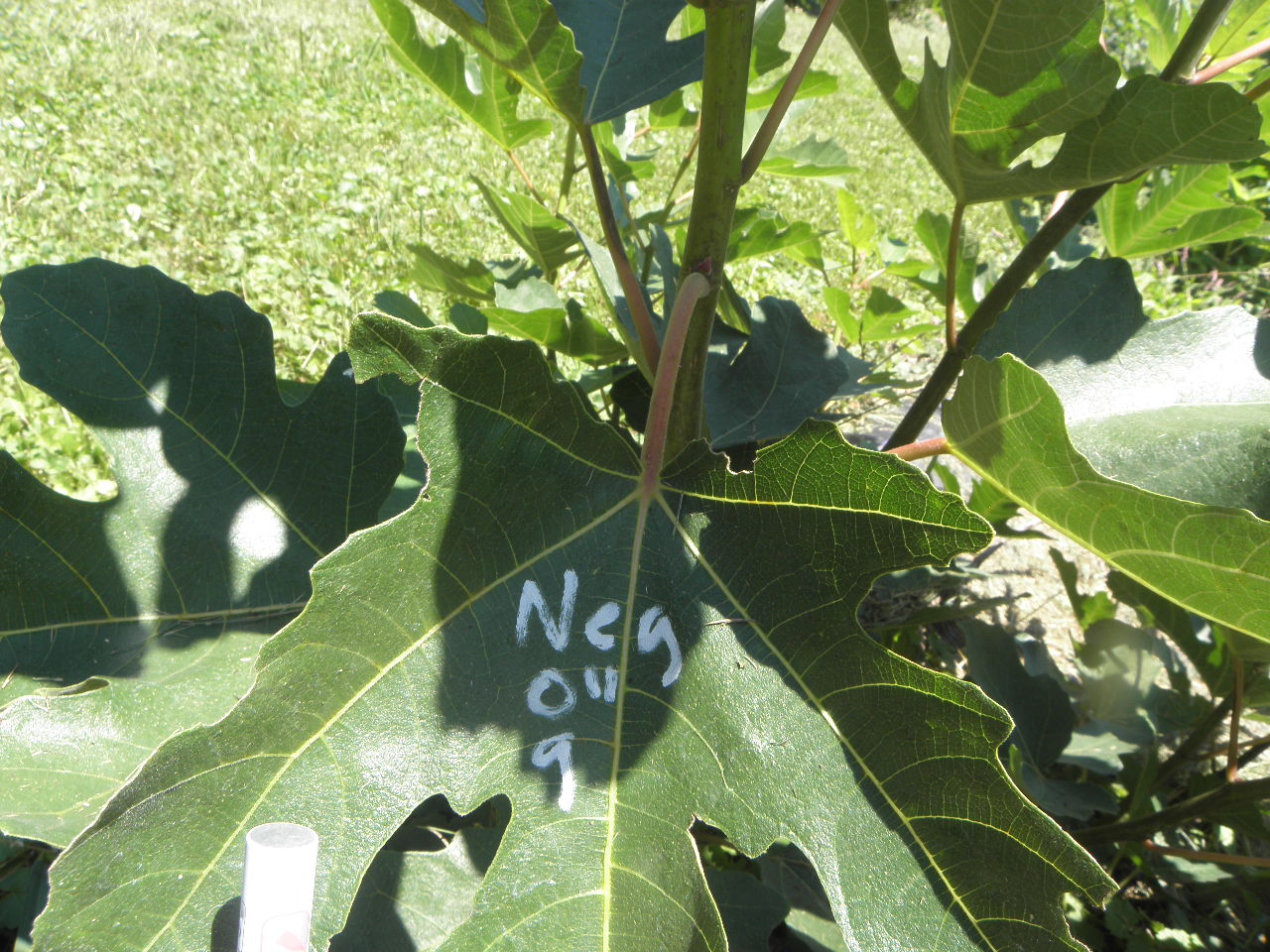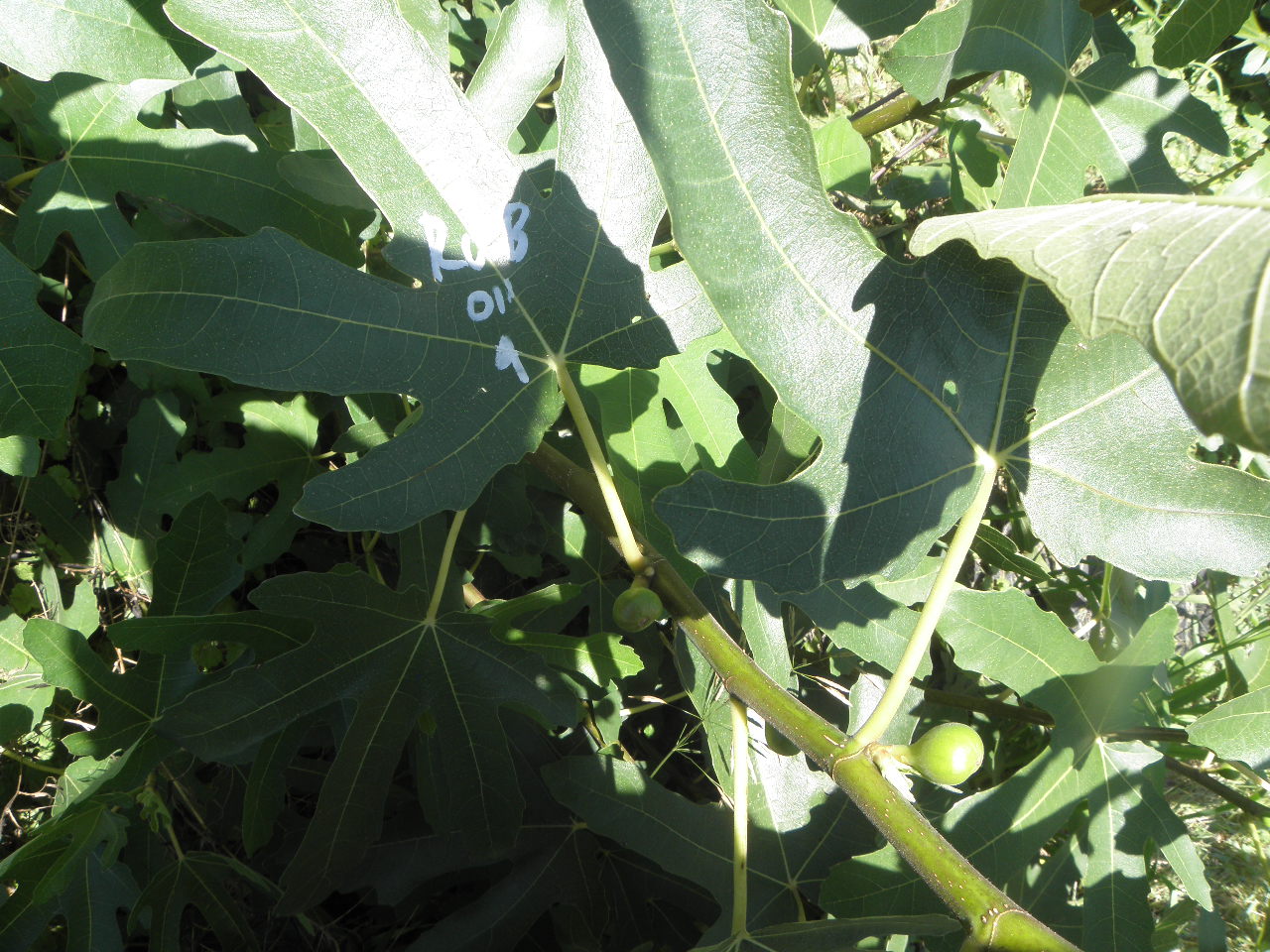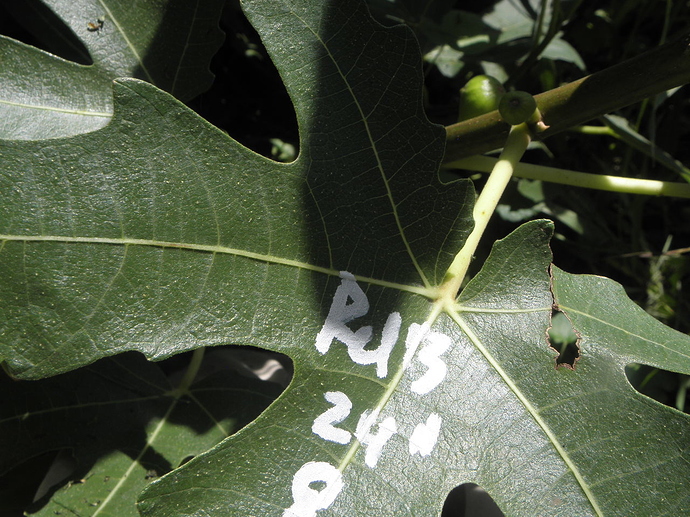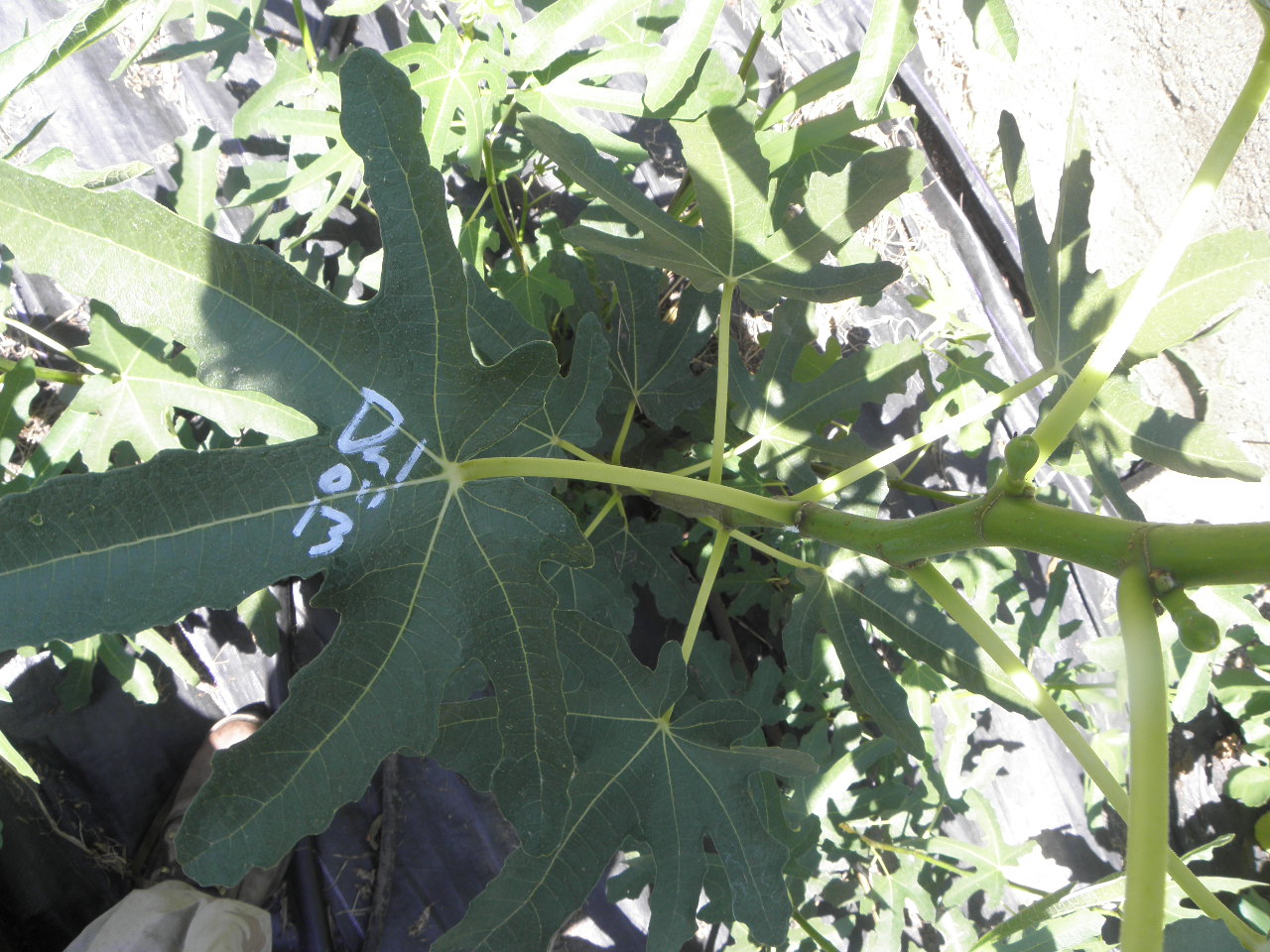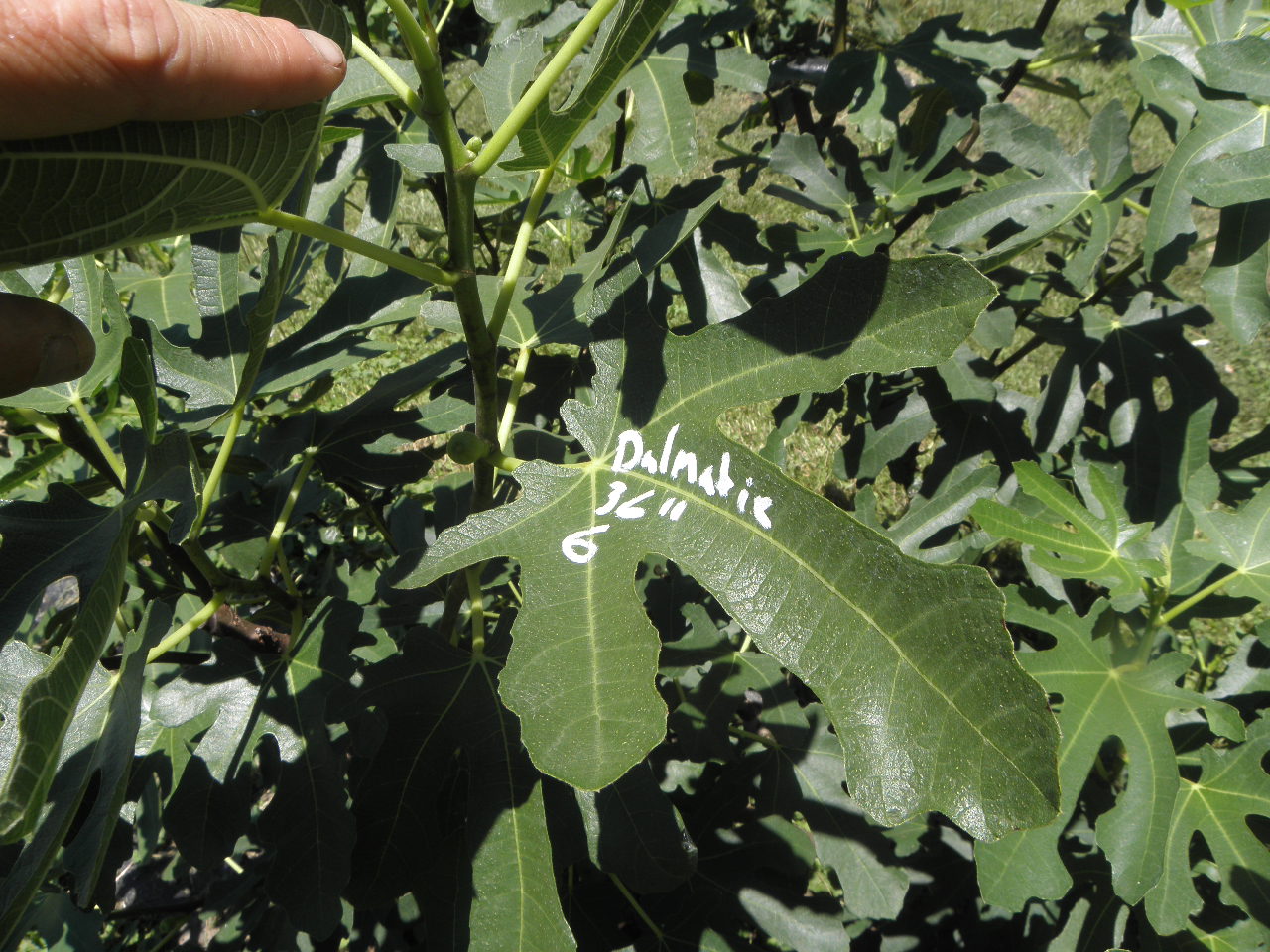I went out today and made notes of main crop fig set in relation to variety and existing structure. These are observations taken from some ~300 trees, aged 3 to 7 years old, planted 8 feet apart in rows. Obviously I did not have the time to document and average every growth, or even every tree, so observations were only made on growths that had set fruit (except for varieties with no fruit set), the information should be taken with a grain of salt… But early fig set generally does correlate with productivity.
In some cases it represents the best case scenario ie. the full potential of the variety, and in others it could be a bit of a fluke due to making observations on a small amount of trees. Also keep in mind that the proof is in the picking, late varieties that are setting now will most likely not begin ripening until around mid October. Everything seems to be about 10 days ahead of average this year, with an early spring and no late frost. Most have had branches thinned, but some have not, still not sure how much of a factor that is for fruit set.
The difference in age does not seem to be significant, so next time you read someone talk about how it takes “time” for a fig to set fruit or become cold hardy, what they probably mean is maturity, as in branch structure, or they are just repeating what they read elsewhere. When they freeze back to the ground it is like starting over at year one, aside from being established.
I am including some discussion from prior years, as well as general variety information. I hope this will be helpful for those of you who would like to grow figs in the ground. Along with the variety name I marked the approximate length (in inches) of existing growth from previous years (0" is starting from the ground) and below that the number of leaves the first fig has set at, but keep in mind, a fig or 2 will often set below the first one 2-3 weeks later, so the ones that began setting early naturally have a lower leaf count, NA means no figs set.
Florea: The undisputed champion for fig set and earliness, this year looks to be no exception. If it were not for issues with splitting and ants it would outproduce the Etna types. Nearly dwarf, generally upright but branchy, small to medium fruit.
Etna Types (Marseilles Black VS, Gino’s Black, Takoma Violet, Black Greek, Salem Dark). A notch or 2 above Florea for flavor, they resist splitting and are somewhat bug resistant due to having a closed eye. Generally upright growers, compact, ripens 2-3 weeks after Florea, the differences I have noted between varieties are very subtle and change year to year, small to medium fruit.
Adriatic JH: Ripens 3-4 weeks after the Etnas, often splits wide open in the summer. Sprawling growth habit, extremely vigorous, medium sized figs.
VdB types (Abique Petite, Vista, Nero 600 m. Valle Negra): Very late ripening, maybe 2 weeks after Adriatic JH all else being equal, though I have never gotten one though winter so that observation is from my container trees. Vigorous upright growers (though Valle Negra seems dwarfed by FMV). Figs from inground trees are roughly half the size of container trees, generally do not begin ripening until at least mid October. Some may be summer budded to another variety, others may be trained to step over.
Easton Purple (I believe to be LSU Tiger). Sprawling plant, vigorous, ripens about the same time as the Etna types, but takes several days longer from swelling to ripe. Thick skin, often splits when planted in ground, medium to large figs.
Atreano: Observations are of only one tree, it has never set figs early enough to ripen after dying back before, maybe this will be the year. Upright plant, vigorous, ripens mid season according to my container trees, large figs.
Italian 258: Observations are of only one inground tree, I had another that managed to set and ripen a few figs after dying back a few years ago, but removed it because of persistent viral symptoms, I believe it was most likely fig badnavirus because it did not behave like what I believe to be FMV, unlike FMV, FBV is sap transmissible and therefore a greater risk to other trees. Ripens 2-3 weeks after Adriatic JH according to my container plants, upright, moderate vigor, medium sized figs.
Negretta: Nearly dwarf, ornamental red petioles, upright branchy growth habit. Small fruit. Container trees have been ripening just slightly ahead of Adriatic JH. Short fruit stem, container trees can be difficult to pick when internode distances are short, they end up looking somewhat like bunches of grapes. Tightly closed eye, thick skin, sometimes splits.
Ronde De Bordeaux: Very vigorous, lanky plants, suckers heavily, ripens one week after Florea when fruit sets early enough. This year fruit set appears to be slightly better than in the past. Small to medium sized figs, often splits and has a large eye.
Tatnall Red (Sicilian Red): Observations are of only one tree. Ripens about a week after Adriatic JH. Medium to large figs, sometimes splits, fairly vigorous upright grower.
Dalmatie: Observations are only from 2 trees. Large figs, generally split and bug resistant so far, compact branchy growth habit. Ripens slightly ahead of Adriatic JH by my estimation.
Longue d’Aout: Seems to be a bit of a disappointment this year with less fruit set than previous years (which was always good), both inground and container trees (though to a lesser extent). Branchy growth appears to inhibit fig set. Vigorous upright growth, medium to large figs. May be trained as a step over.
Noire de Barbentane: Large figs, very high quality but very late ripening, sometimes splits. Extremely vigorous upright grower. Slated for summer budding, has never ripened a fig in ground and is too big to protect.
Maltese Falcon: Medium to large figs, appears to be synonymous with Mission, container trees have not been very productive either. Extremely vigorous upright growth, slated for budding.
Improved Celeste (O’Rourke Not): Observations are of only one tree. Medium to low vigor, upright habit. Figs are small to medium sized, ripening fast, but always setting late (container trees as well so far). Slated for removal, relatively bland to my taste.
If you would like to add any observations about your own inground trees, please do, these varieties or different, contradictory or not. Best of luck to everyone this season.
